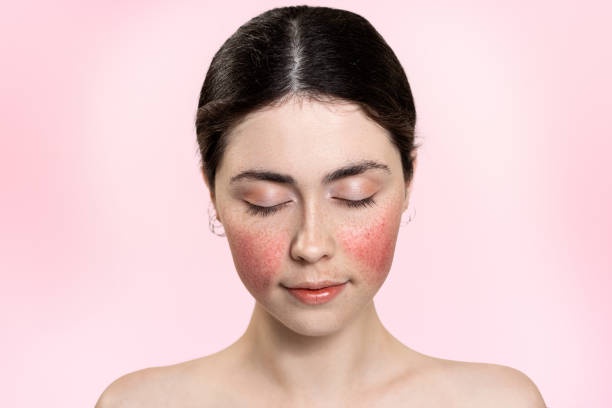Rosacea is a chronic skin condition characterized by facial redness, swelling, and often acne-like bumps. Understanding the different types of rosacea is crucial for effective management, as symptoms and treatments can vary significantly between types.Rosacea treatment in Islamabad Pakistan There are four recognized subtypes of rosacea, each with its unique set of characteristics:
Erythematotelangiectatic Rosacea (ETR)Characteristics:
ETR is marked by facial redness (erythema), visible blood vessels (telangiectasia), and a tendency to flush or blush more easily than others. Skin may also feel sensitive, dry, and can sting or burn.
Management: Treatments focus on reducing redness and visible blood vessels. Lifestyle modifications to identify and avoid triggers are crucial. Topical treatments, laser therapy, and sometimes oral medications are used to manage symptoms.
Papulopustular Rosacea
Characteristics: This type resembles acne, featuring redness with red bumps (papules) and some pus-filled pimples (pustules). It may be mistaken for acne but lacks comedones (blackheads or whiteheads). It often affects the central face, including the cheeks, chin, nose, and forehead.Management: The approach may include topical treatments (e.g., metronidazole, azelaic acid) and oral antibiotics (e.g., doxycycline) to reduce inflammation and clear up bumps.
Phymatous Rosacea
Characteristics: Phymatous rosacea leads to skin thickening and an irregular, bumpy texture, most commonly on the nose—a condition known as rhinophyma. It can also affect the chin, forehead, cheeks, and ears. The skin may appear oily and pores enlarged.
Management: Treatment options include medications to reduce inflammation, but in more advanced cases, laser therapy, dermabrasion, or surgery may be necessary to remove excess tissue.
Ocular Rosacea
Characteristics: Ocular rosacea primarily affects the eyes, leading to symptoms such as dryness, irritation, swollen eyelids, and visible blood vessels on the eyelids. It can cause serious eye problems if left untreated.Management: Eye care involves gentle eyelid hygiene, artificial tears, oral antibiotics, and sometimes prescription eye drops. Seeing an ophthalmologist is important for managing this subtype.
General Treatment Notes
For all types of rosacea, identifying and avoiding personal triggers—such as certain foods, beverages, weather conditions, and stress—is an essential part of management. The use of gentle skincare products and sun protection is also recommended to help minimize symptoms.
Diagnosis and Treatment
Proper diagnosis by a dermatologist is vital, as treatments vary depending on the rosacea subtype and individual symptoms. A tailored treatment plan can include topical medications, oral antibiotics, laser and light therapies, and lifestyle changes. In many cases, a combination of treatments may be necessary for optimal control of symptoms.Understanding the specific type of rosacea a person has is key to effective management, enabling targeted treatments and lifestyle adjustments that can significantly improve the condition and quality of life.


No comments yet